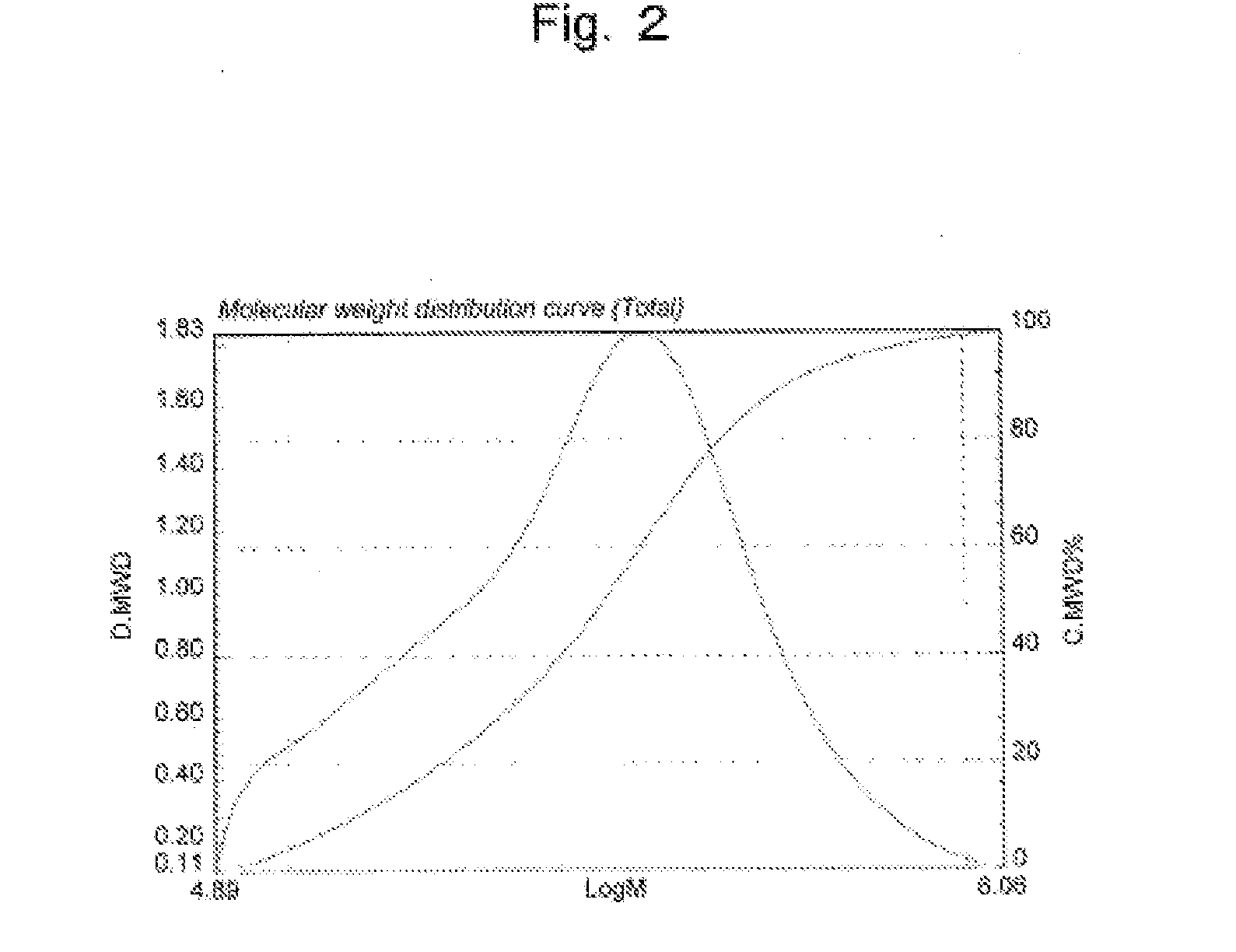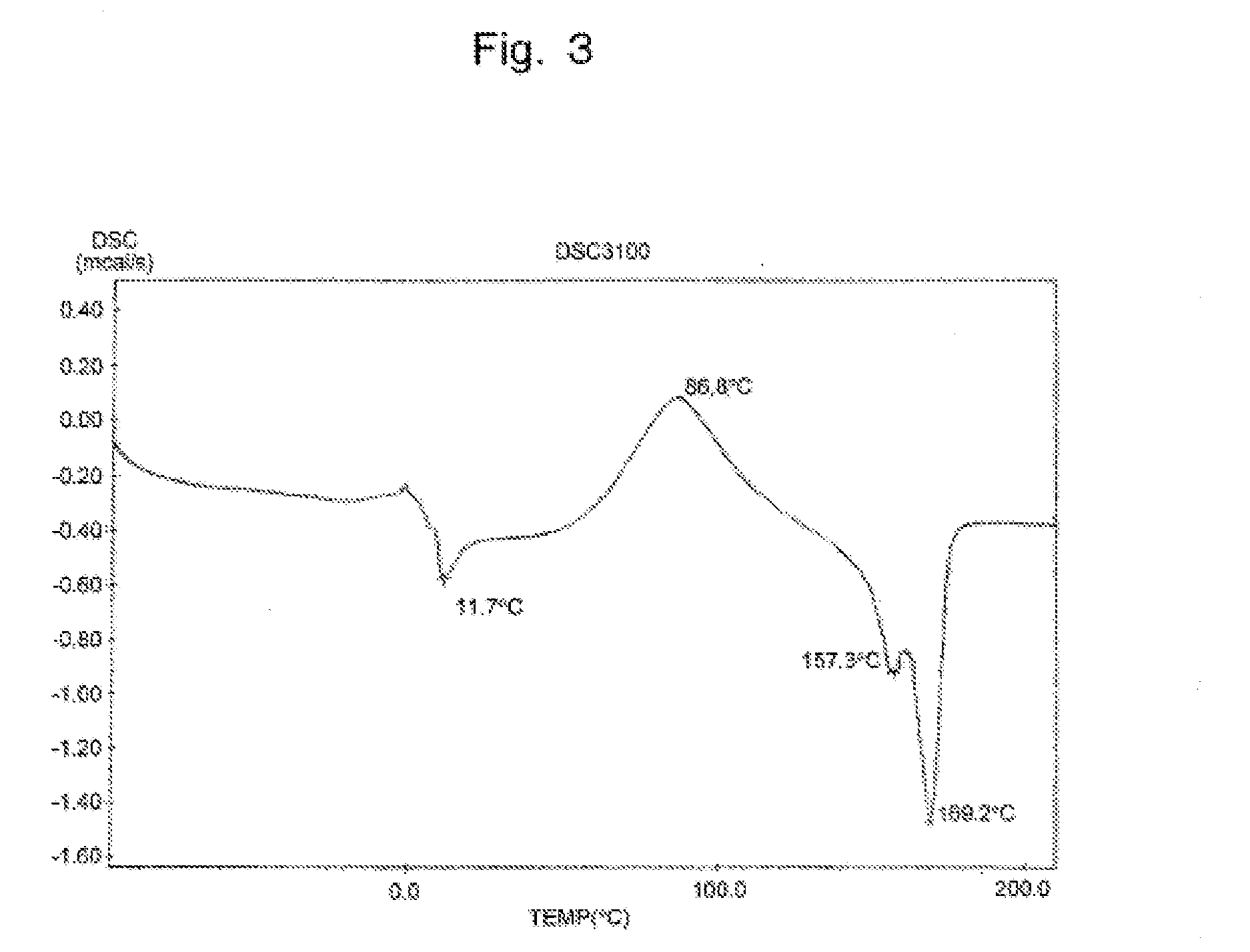Method for production of polyester copolymer using recombinant microorganism
- Summary
- Abstract
- Description
- Claims
- Application Information
AI Technical Summary
Benefits of technology
Problems solved by technology
Method used
Image
Examples
example 1
Production of a Polyester Copolymer with the Use of Escherichia Coli Capable of High LA Accumulation
(1) Production of a Recombinant Microorganism
Genomic DNA was extracted from M. elsdenii (ATCC17753) with the use of a DNeasy Tissue Kit (Qiagen). Subsequently, primer DNA of a forward primer comprising the EcoRI recognition sequence and that of a reverse primer comprising the PstI recognition sequence were synthesized in order to amplify a nucleic acid encoding propionyl CoA transferase (accession No. J04987) by PCR. PCR reaction was performed for 1 cycle of 94° C. for 2 minutes and 30 cycles of 94° C. for 15 seconds, 55° C. for 30 seconds, and 68° C. for 2 minutes in a reaction solution containing KOD-Plus-DNA polymerase (1U), PCR buffer, 1 mM MgSO4, the primers (15 pmol each), and 0.2 mM dNTPs (each produced by TOYOBO Co., Ltd.) by means of iCycler (BioRad) with the use of the genomic DNA as a template. Then, an amplified fragment with a size of approximately 1,500 by was collected,...
example 2
Production of a Microorganism Capable of High LA Accumulation
(1) Polymer Production
The Jw2293, Jw0885, and Jw0886 strains of Escherichia coli capable of high LA accumulation were transformed with the use of pTV118NPCTC1(ST / QK)AB1 prepared in (1) of Example 1.
An LB medium (1000 mL) containing 100 μg / mL ampicillin, 2% glucose, and 10 mM pantothenic acid was inoculated with a different one of the obtained transformants, followed by culture at 37° C. for 72 hours. After culture, centrifugation was performed at 4° C. at 3,100 rpm for 15 minutes to collect bacterial cells. The bacterial cells were suspended in a 10 mM Tris hydrochloride buffer solution (pH 7.5) and centrifuged again under the above conditions, followed by lyophilization for 2 days.
The dried bacterial cells were placed in a pressure-proof glass reaction tube. Chloroform (40 mL) was added thereto to result in a suspension. The suspension was retained in a heat block at 100° C. for 3 hours, followed by cooling to room temper...
example 3
Production of a Polyester Copolymer by Culture Under Anaerobic Conditions
(1) Vector Construction
PCR was performed using pTV118NPCTC1(ST / QK)AB prepared in (1) of Example 1 as a template in a manner allowing linear plasmid lacking the gene encoding β KT and the gene encoding AACoA-R to be obtained. Ring closure was carried out for the obtained amplified fragment. Thus, plasmid pTV118NpctC1(ST / QK) comprising pTV118N having the gene encoding pct and the gene encoding PhaCm (FIG. 16, left) was prepared.
A DNA fragment having approximately 3,200 base pairs obtained by digesting pGEMC1AB prepared in (1) of Example 1 with BamHI (restriction enzyme) was ligated to a linear vector plasmid obtained by digesting a low-copy plasmid pACYC177DNA with BamHI (restriction enzyme). The gene encoding β KT and the gene encoding AACoA-R were introduced into the BamHI site of pACYC177DNA. Thus, plasmid pACYC177AB was obtained (shown in FIG. 16, right).
(2) Polymer Production
The Escherichia coli W3110 strain...
PUM
 Login to View More
Login to View More Abstract
Description
Claims
Application Information
 Login to View More
Login to View More - R&D
- Intellectual Property
- Life Sciences
- Materials
- Tech Scout
- Unparalleled Data Quality
- Higher Quality Content
- 60% Fewer Hallucinations
Browse by: Latest US Patents, China's latest patents, Technical Efficacy Thesaurus, Application Domain, Technology Topic, Popular Technical Reports.
© 2025 PatSnap. All rights reserved.Legal|Privacy policy|Modern Slavery Act Transparency Statement|Sitemap|About US| Contact US: help@patsnap.com



